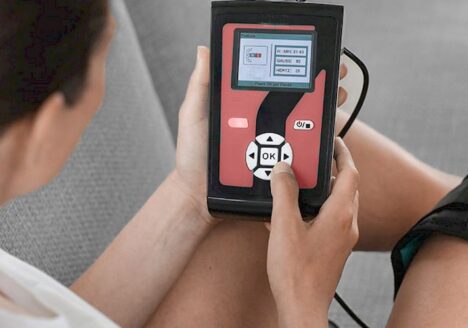The CORE Compass framework offers a balanced approach to personal development, guiding individuals toward fulfillment across four key dimensions: Curiosity and Cognitive Growth, Operational and Physical Vitality, Resilience and Emotional Equilibrium, and Essence and Spiritual Fulfillment. Morning routines, when thoughtfully designed, can enhance these dimensions, offering a structured start to the day that fosters well-being, productivity, and alignment with one’s values.
Building on the foundation of the Self Matrix framework, this article demonstrates how research-based insights and practical strategies can align morning routines with the principles of the CORE Compass framework. Every recommendation is backed by authoritative books and peer-reviewed studies to ensure precision, reliability, and applicability.
Curiosity and Cognitive Growth
The Curiosity and Cognitive Growth dimension focuses on intellectual stimulation, creativity, and lifelong learning. Morning routines that prioritize activities such as reading, journaling, or problem-solving create a foundation for cognitive enhancement.
Research by Preckel et al. (2011) highlights that individuals with morning-oriented habits perform better academically, as their peak cognitive function aligns with early hours of the day. By dedicating time in the morning to intellectually demanding tasks, individuals can optimize their focus and mental clarity.
Benjamin Spall and Michael Xander, in My Morning Routine (2018), emphasize that many successful individuals begin their day with activities that spark curiosity, such as reading or brainstorming. This aligns with Duhigg’s (2012) concept of the habit loop, where regular engagement in intellectual tasks builds a self-reinforcing cycle of curiosity and growth.
Practical Ideas for Curiosity and Cognitive Growth:
- Spend 20 minutes reading an engaging book or article that expands your knowledge.
- Use a journal to reflect on ideas, brainstorm solutions to challenges, or outline daily priorities.
- Try creative exercises, such as mind mapping or writing, to stimulate innovative thinking.
Operational and Physical Vitality
The Operational and Physical Vitality dimension emphasizes health, energy, and stamina. Morning routines that include exercise, hydration, and proper nutrition establish a foundation for sustained vitality throughout the day.
Regular exercise offers both physical and cognitive benefits. Hillman et al. (2008) found that aerobic activity increases brain-derived neurotrophic factor (BDNF), which supports memory and cognitive performance. Even 10–15 minutes of light movement, such as yoga or stretching, can invigorate the body and set a productive tone for the day.
Circadian rhythm alignment is another critical factor. Tonetti et al. (2015) found that individuals who align their activities with their natural biological rhythms experience improved energy and focus. Morning sunlight exposure, as highlighted by Chiesa et al. (2013), regulates cortisol levels, enhancing alertness and decision-making.
James Clear’s Atomic Habits (2018) introduces the concept of “habit stacking,” which simplifies the integration of new habits into existing routines. For example, pairing morning coffee with a stretching session can help establish consistent physical activity.
Practical Ideas for Operational and Physical Vitality:
- Start your day with 10–15 minutes of exercise, such as walking, yoga, or light cardio.
- Hydrate with a glass of water upon waking to re-energize your body.
- Plan a nutrient-rich breakfast, emphasizing proteins and healthy fats to fuel your day.
Resilience and Emotional Equilibrium
The Resilience and Emotional Equilibrium dimension emphasizes managing stress, cultivating emotional strength, and navigating challenges with grace. Morning routines that include mindfulness practices, such as meditation or journaling, enhance emotional balance and resilience.
Chiesa et al. (2013) demonstrated that mindfulness practices activate the prefrontal cortex while reducing emotional reactivity through amygdala regulation. Similarly, Pennebaker and Chung (2011) found that journaling improves emotional regulation by helping individuals process and clarify emotions.
Hal Elrod’s The Miracle Morning (2021) recommends starting the day with Silence (meditation) and Affirmations, practices that nurture a positive mindset and emotional resilience. Visualization, another element of Elrod’s framework, can help individuals set an intentional tone for the day.
Practical Ideas for Resilience and Emotional Equilibrium:
- Practice mindful breathing or meditation for 5–10 minutes to center yourself.
- Write affirmations or gratitude statements to reinforce a positive outlook.
- Reflect on challenges from the previous day and reframe them as opportunities for growth.
Essence and Spiritual Fulfillment
The Essence and Spiritual Fulfillment dimension focuses on aligning with personal values and connecting to something greater. Morning routines that incorporate prayer, reflection, or visualization foster spiritual well-being and purpose.
Robin Sharma’s The 5 AM Club (2018) advocates using early morning hours for reflection and goal-setting, aligning personal actions with higher values. This aligns with Tonetti et al.’s (2015) research on circadian rhythms, which emphasizes the benefits of timing spiritual practices to match natural cycles of energy and focus.
Elrod’s (2021) SAVERS framework includes Visualization and Silence as tools for spiritual connection. These practices help individuals clarify their intentions and align their daily actions with their overarching purpose.
Practical Ideas for Essence and Spiritual Fulfillment:
- Dedicate 5 minutes to visualization, imagining how your day aligns with your values and goals.
- Use prayer or reflective journaling to deepen your sense of purpose and gratitude.
- Write down key aspirations or long-term intentions to maintain focus on what truly matters.
Building a CORE Compass-Inspired Morning Routine
To design a morning routine aligned with the CORE Compass framework, follow these steps:
- Start Small and Build Gradually:
Begin with one or two habits, such as 5 minutes of meditation or a short workout. Lally et al. (2010) emphasize that habits take time—an average of 66 days—to solidify, requiring consistency and patience. - Incorporate All Four Dimensions:
Integrate activities that enhance Curiosity, Vitality, Resilience, and Fulfillment. For example, read to nurture Curiosity, exercise to enhance Vitality, meditate for Resilience, and reflect for Fulfillment. - Leverage Habit Stacking:
Pair new habits with existing ones to simplify integration. For instance, combine journaling with your morning coffee (Clear, 2018). - Align with Circadian Rhythms:
Schedule activities during your peak energy hours to maximize their effectiveness (Tonetti et al., 2015). - Reflect and Adjust:
Regularly assess your routine’s effectiveness and make adjustments to align with your evolving goals.
Case Studies and Insights
Hal Elrod’s Miracle Morning
Elrod’s “SAVERS” framework—Silence, Affirmations, Visualization, Exercise, Reading, and Scribing—balances all four CORE Compass dimensions. Each element fosters mindfulness, physical vitality, intellectual curiosity, and spiritual alignment (Elrod, 2021).
Robin Sharma’s 5 AM Club
Sharma’s “20/20/20 Formula” dedicates 20 minutes each to movement, reflection, and learning. This structured approach balances Vitality, Resilience, and Curiosity, creating a powerful start to the day (Sharma, 2018).
Arianna Huffington’s Morning Practices
Arianna Huffington incorporates mindfulness meditation, gratitude journaling, and light exercise into her mornings. These practices enhance her emotional resilience, intellectual curiosity, and spiritual fulfillment, reflecting principles of the CORE Compass framework (Spall and Xander, 2018).
Conclusion
Morning routines aligned with the principles of the CORE Compass framework offer a powerful way to enhance Curiosity, Vitality, Resilience, and Fulfillment. By integrating intentional practices into your mornings, you can create balance, cultivate growth, and align your actions with your values.
Start small, stay consistent, and adapt your routine as your goals evolve. Each morning is an extraordinary opportunity to realign with your purpose, setting the stage for a fulfilling and productive day.
References
Chiesa, A., Serretti, A. and Jakobsen, J.C. (2013) Mindfulness: Top-Down or Bottom-Up Emotion Regulation Strategy? Clinical Psychology Review, 33(1), pp. 82–96.
Clear, J. (2018) Atomic Habits: An Easy & Proven Way to Build Good Habits & Break Bad Ones. London: Penguin.
Duhigg, C. (2012) The Power of Habit: Why We Do What We Do in Life and Business. New York: Random House.
Elrod, H. (2021) The Miracle Morning: The Not-So-Obvious Secret Guaranteed to Transform Your Life. New York: Hal Elrod.
Hillman, C.H., Erickson, K.I. and Kramer, A.F. (2008) Be Smart, Exercise Your Heart: Exercise Effects on Brain and Cognition. Nature Reviews Neuroscience, 9(1), pp. 58–65.
Lally, P., Van Jaarsveld, C.H.M., Potts, H.W.W. and Wardle, J. (2010) How Are Habits Formed: Modelling Habit Formation in the Real World. European Journal of Social Psychology, 40(6), pp. 998–1009.
Pennebaker, J.W. and Chung, C.K. (2011) ‘Expressive Writing: Connections to Physical and Mental Health’, in Friedman, H.S. (ed.) The Oxford Handbook of Health Psychology. Oxford: Oxford University Press, pp. 417–437.
Sharma, R. (2018) The 5 AM Club. Mumbai: Jaico Publishing House.
Spall, B. and Xander, M. (2018) My Morning Routine: How Successful People Start Every Day Inspired. London: Penguin.
Tonetti, L., Natale, V. and Randler, C. (2015) Association Between Circadian Preference and Academic Achievement: A Systematic Review and Meta-Analysis. Chronobiology International, 32(6), pp. 792–801.




